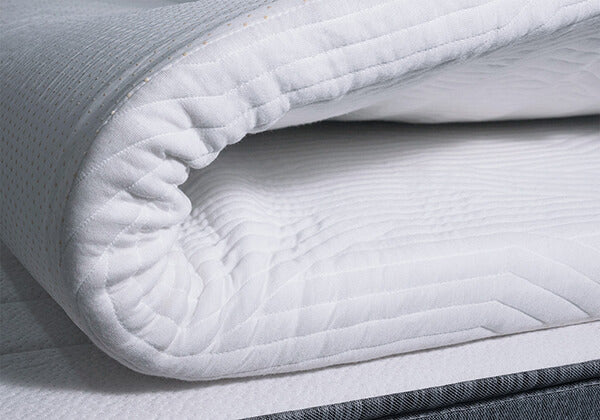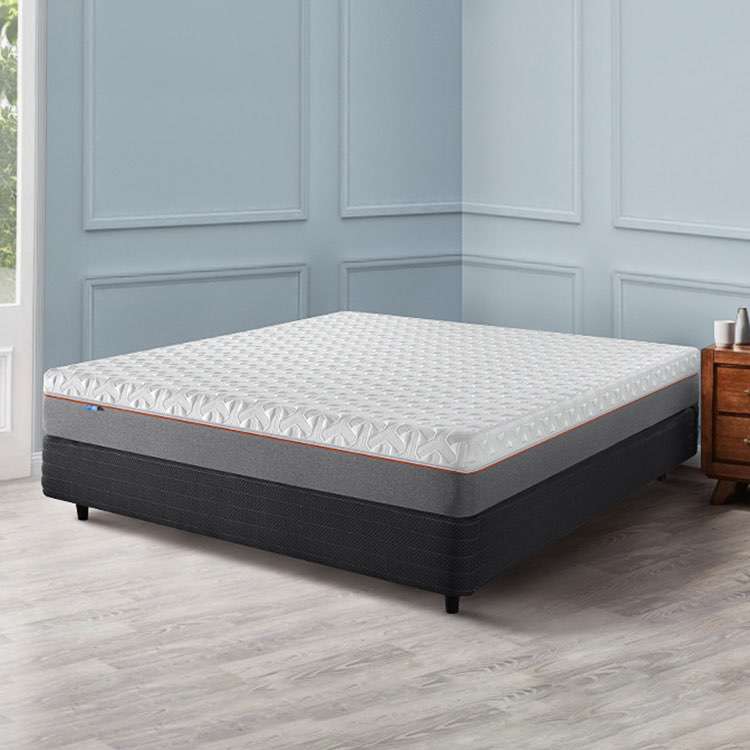How Long Do Mattress Topper Last?
 FOSHAN LEIZI FURNITURE CO., LTD
FOSHAN LEIZI FURNITURE CO., LTD  May 17,2024
May 17,2024
Memory foam mattress toppers have revolutionized the sleep industry, offering a cost-effective solution to enhance the comfort and support of your mattress. These plush additions provide an extra layer of cushioning, contouring to your body's curves and relieving pressure points for a more restful night's sleep. However, as with any bedding accessory, understanding the lifespan of memory foam mattress toppers is crucial for making informed purchasing decisions and ensuring long-term satisfaction.
In this comprehensive guide, we embark on a journey to uncover the mysteries surrounding the longevity of memory foam mattress toppers. We'll explore the average lifespan of these popular sleep enhancers, dissecting the factors that influence their durability and resilience. From the quality of materials used to the frequency of usage and maintenance routines, we'll delve into the intricate details that determine how long a mattress topper will last.
As consumers, it's essential to have realistic expectations regarding the lifespan of our bedding investments. By gaining insights into the lifespan of memory foam mattress toppers, we empower ourselves to make informed choices and maximize the value of our purchases. Whether you're in the market for a new mattress topper or seeking to prolong the life of your existing one, this guide will equip you with the knowledge and strategies needed to achieve restful sleep and optimal comfort for years to come. So, let's embark on this journey together and unlock the secrets to a more rejuvenating sleep experience.
Understanding Lifespan:
The lifespan of a memory foam mattress topper can vary based on several factors, including material quality, density, thickness, and usage patterns. On average, memory foam mattress toppers last between 3 to 5 years, though higher-quality options may endure longer.
Material quality is a primary determinant of lifespan. Higher-density memory foam toppers tend to be more durable and resilient than lower-density ones. The density of the foam affects its ability to retain shape and provide consistent support over time. Toppers made from high-quality materials are less prone to sagging, indentations, and deterioration.
Additionally, the thickness of the mattress topper can impact its longevity. Thicker toppers typically last longer due to their robust construction and ability to withstand wear and tear. They provide more cushioning and support, distributing body weight more evenly and reducing pressure on the mattress beneath.
Usage frequency and maintenance routines also play crucial roles in determining lifespan. Toppers subjected to frequent use or placed under heavier weight loads may experience faster deterioration. Proper care and maintenance, such as regular rotation and cleaning, can help prolong the life of the topper by preventing premature wear and tear.
By understanding these factors, consumers can make informed decisions when purchasing a memory foam mattress topper and take proactive steps to maximize its lifespan.
Factors Impacting Durability:
Several key factors influence the durability of memory foam mattress toppers, ultimately affecting how long they last and maintain their performance over time.
Material quality is paramount when assessing the durability of a mattress topper. High-density memory foam toppers tend to be more resilient and long-lasting compared to lower-density options. The density of the foam affects its ability to withstand compression and maintain its shape, providing consistent support and comfort.
Thickness also plays a significant role in determining durability. Thicker mattress toppers offer more substantial padding and support, distributing body weight more evenly and reducing pressure on the underlying mattress. As a result, thicker toppers are less prone to developing indentations or sagging over time.
Usage patterns and maintenance practices are additional factors that impact durability. Toppers subjected to frequent use or placed under heavier weight loads may experience accelerated wear and tear. Regular rotation of the mattress topper can help distribute weight evenly and prevent premature deterioration. Additionally, proper cleaning and maintenance, such as airing out the topper and using a mattress protector, can extend its lifespan and preserve its performance.
By considering these factors when selecting a memory foam mattress topper, consumers can choose a durable and long-lasting option that meets their needs for comfort and support.
Recognizing Wear and Tear:
Being able to identify signs of wear and tear in your memory foam mattress topper is crucial for maintaining comfort and support levels and knowing when it's time to replace it.
One common indicator of wear and tear is sagging or indentations in the surface of the topper. Over time, the foam may lose its resilience and begin to conform to the shape of your body unevenly, leading to dips and valleys that can affect sleep quality and comfort.
Loss of support is another telltale sign that your mattress topper may be nearing the end of its lifespan. If you notice that the topper no longer provides the same level of support as it once did, or if you experience increased discomfort or pressure points while sleeping, it may be time for a replacement.
Visible signs of wear, such as tears, rips, or fraying along the edges or seams of the topper, are also indicators that it may need to be replaced. These issues can compromise the structural integrity of the topper and affect its ability to provide adequate support and cushioning.
If you notice any of these signs of wear and tear in your memory foam mattress topper, it's essential to address them promptly to avoid further deterioration and discomfort. By recognizing these signs early on, you can take proactive steps to ensure a restful and supportive sleep environment.
Maximizing Lifespan:
To maximize the lifespan of your memory foam mattress topper, it's essential to implement proper care and maintenance routines.
Regular rotation is key to ensuring even wear and preventing the formation of indentations or sagging in specific areas. Aim to rotate your mattress topper every few months to distribute weight evenly and prolong its lifespan.
Using a mattress protector can also help extend the life of your topper by shielding it from spills, stains, and moisture. A waterproof or water-resistant protector can prevent liquids from seeping into the foam and causing damage, while also providing a barrier against dust mites and allergens.
Periodically airing out your mattress topper can help prevent moisture buildup and reduce the risk of mold and mildew growth. Simply remove the topper from your bed and allow it to air out in a well-ventilated area for a few hours or overnight.
When cleaning your mattress topper, avoid using harsh chemicals or cleaning agents that may damage the foam. Instead, opt for gentle, non-abrasive cleaners and follow the manufacturer's instructions for cleaning and care.
Finally, be mindful of the weight placed on your mattress topper. Avoid sitting or standing on the edges, as this can cause premature wear and tear. Additionally, limit exposure to direct sunlight and extreme temperatures, as excessive heat can accelerate the breakdown of the foam.
By following these tips and implementing proper care and maintenance practices, you can maximize the lifespan of your memory foam mattress topper and enjoy long-lasting comfort and support for years to come.
Choosing the Best
When selecting a memory foam mattress topper, several factors should be considered to ensure optimal comfort and longevity.
Begin by assessing the density of the foam, as higher-density toppers typically offer better durability and support. Look for toppers with a density of at least 3 pounds per cubic foot for lasting performance.
Consider the thickness of the topper as well, as thicker options provide more cushioning and support. A thickness of 2 to 4 inches is generally recommended for most sleepers.
Check for certifications like CertiPUR-US® to ensure the foam is made without harmful chemicals and meets quality standards.
Read reviews and compare brands to find reputable manufacturers known for quality craftsmanship and customer satisfaction.
Finally, consider your sleep preferences and any specific needs, such as pressure relief or temperature regulation, to find the best fit for your individual needs. By prioritizing quality and considering these factors, you can choose the best memory foam mattress topper for a comfortable and restful sleep experience.
In conclusion, understanding the lifespan of memory foam mattress toppers and factors influencing durability is essential for informed decision-making. By recognizing signs of wear and tear, implementing proper maintenance routines, and selecting high-quality options, consumers can maximize the lifespan of their mattress toppers and enjoy long-lasting comfort and support. Whether you're in the market for a new topper or seeking to extend the life of your current one, these insights empower you to make choices that promote restful sleep and overall well-being. With proper care and attention, your memory foam mattress topper can provide years of rejuvenating sleep.












